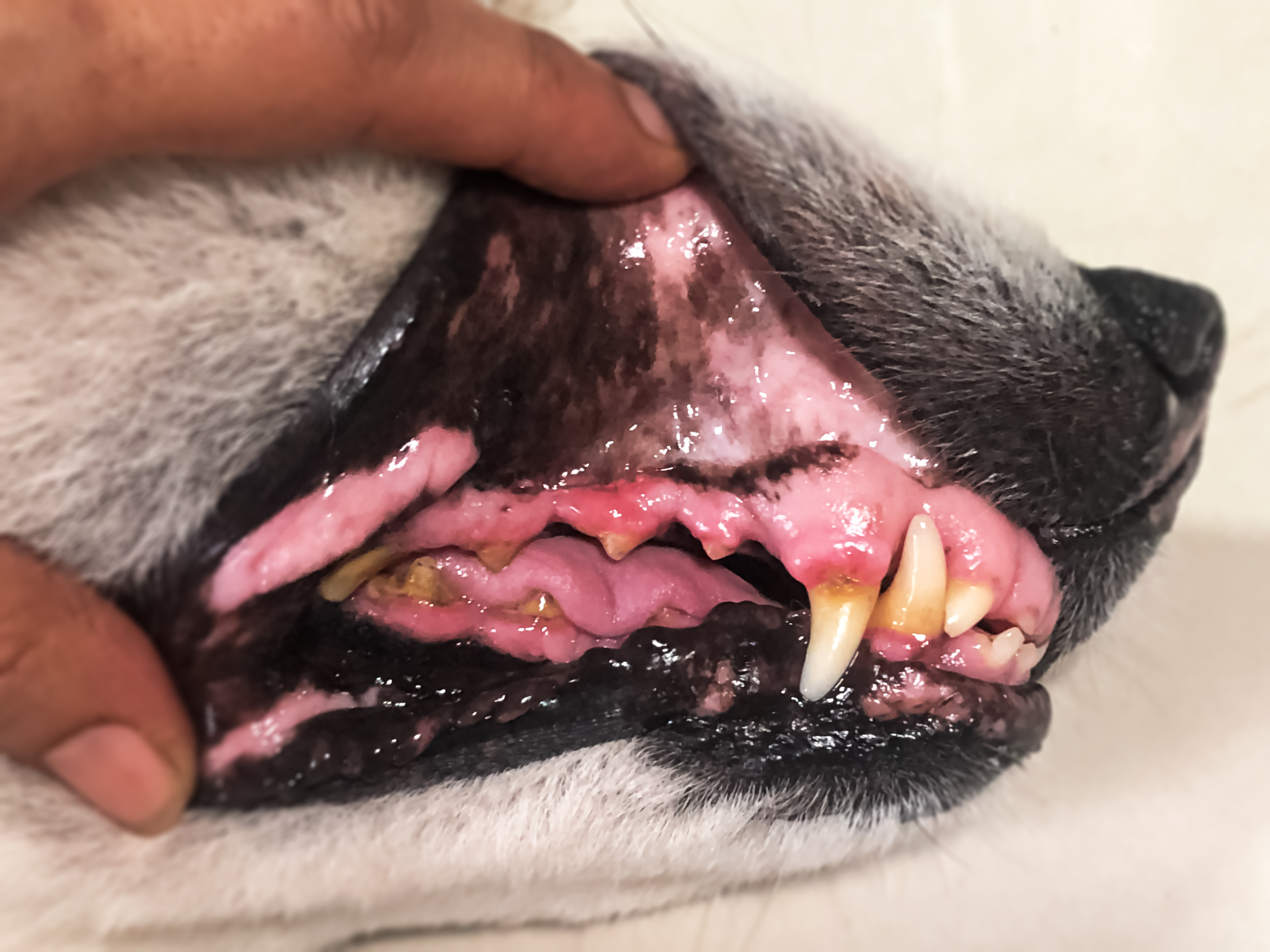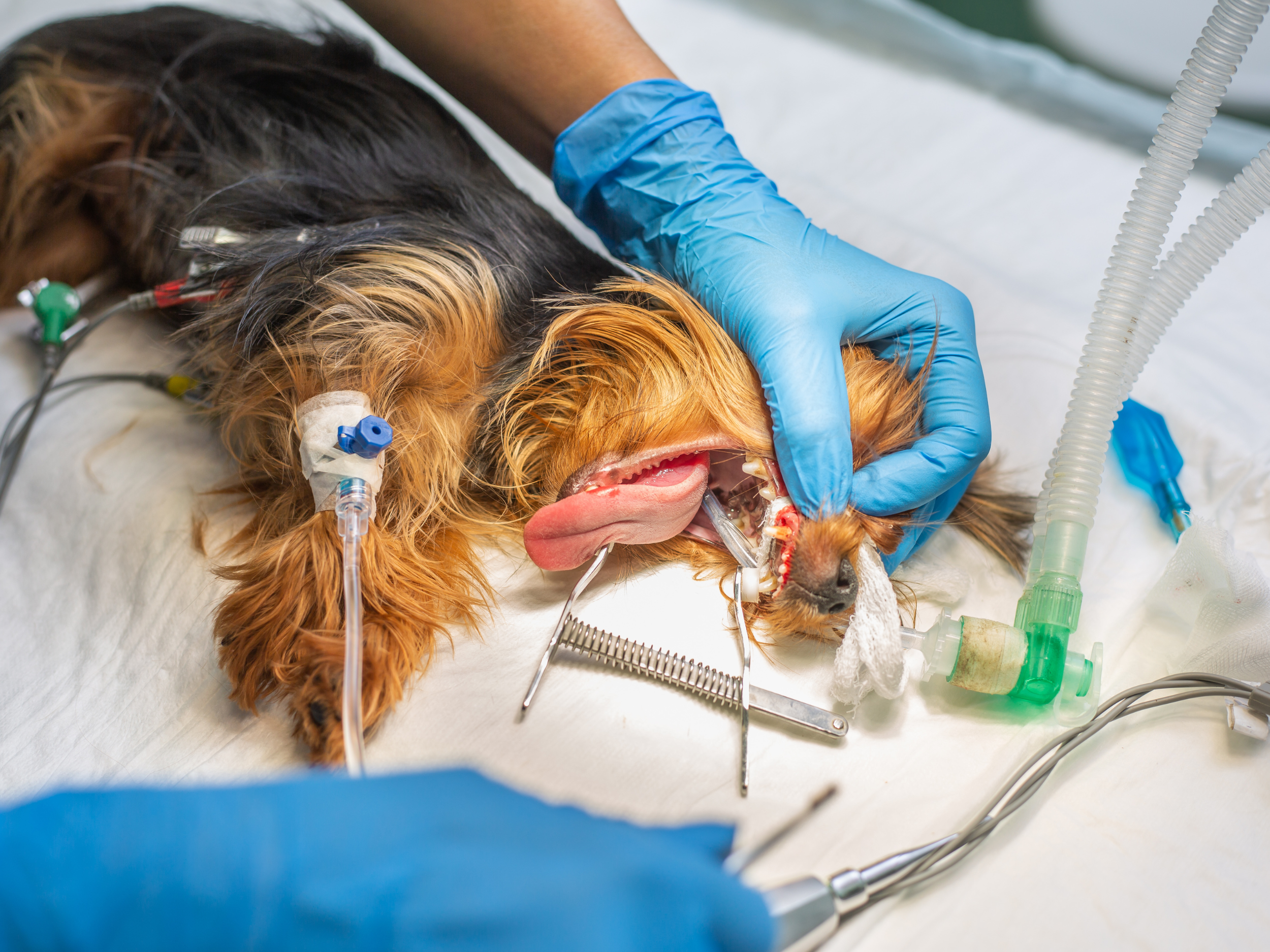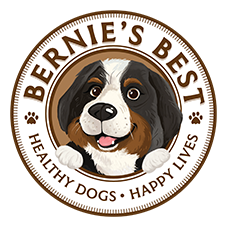Understanding Canine Gum Disease
Gum disease in dogs, also known as periodontal disease, is arguably the most common health condition affecting our canine companions. Studies have shown that more than two-thirds of dogs over the age of three have some form of gum issues. It starts with the buildup of plaque, a kind of bacterial film that forms on teeth. Within days of forming, plaque can harden into tartar, further aggravating the gums and leading to more serious conditions. The progression of gum disease in dogs typically goes through four stages, ranging from mild gingivitis to severe periodontal disease, where tooth loss can occur. Early on, you might just notice red or puffy gums, bad breath, or your dog being a bit picky with their food. Things get more severe in advanced stages: root exposure, loose teeth, and even pus oozing around the teeth can be observed. These are signs there are some serious issues you need to address.
Why Oral Hygiene In Dogs is Crucial

It may seem like just a little plaque, tartar, or bad breath, but it’s not. Gum disease in dogs isn’t just about oral health. It can have far-reaching impacts on their overall well-being. Research has linked periodontal disease in dogs to systemic issues like liver and heart disease. It’s painful for them too, even if they don’t always show it. Dogs with periodontal disease might paw at their mouths, drool more than usual, or show a decreased appetite. Prevention is key, and it involves more than just the occasional teeth cleaning. Routine home dental care and a bit of education and effort on our part as their caretakers can go a long way in preventing advanced periodontal disease in dogs. A comprehensive approach cannot only save your dog’s teeth but also prevent a whole host of other health issues down the line.
Periodontal Disease: There’s More To A Dog’s Oral Health
Periodontal disease in dogs is an infection and inflammation of the periodontium, the tissues surrounding the teeth. This includes the gums, the part of the jaw bone that contains the tooth sockets, and the ligaments that hold the teeth in place. The main culprit behind dog gum disease? Plaque. This is a layer of bacteria that forms on the surface of the teeth, both above and below the gum line. If not removed, plaque hardens into tartar, further aggravating the gums and leading to more serious conditions.
The Role of Bacteria In A Dog’s Teeth
A dog’s mouth has a rich bacterial microflora thriving in plaque on tooth surfaces. The bacteria and your dog (considered ‘the host’ by scientists!) initially exist in relative peace and harmony. However, if oral hygiene for your dog is poor and plaque becomes thick, the bacterial population balance becomes more bad than good. This shift in the bacterial environment triggers your dog’s immune system to respond, leading to inflammation and tissue damage around the root, which is commonly known as gingivitis. As the condition gets worse, it leads to periodontitis in dogs. This involves bones in their jaw and could eventually result in tooth loss.
Stages of Gum Disease in Dogs
Periodontal disease in dogs is classified into four stages:
- Stage 1: Gingivitis – This initial stage of periodontal disease is marked by inflammation of the gums in response to plaque. There’s no loss of attachment between teeth and gums at this point, and the condition is reversible with proper care. The best news is that you can prevent periodontal disease like gingivitis with proper diet and care too!
- Stage 2: Early Periodontitis – Less than 25% of attachment loss occurs in this stage. Your vet might start seeing early signs of periodontitis on X-rays, and some gum recession may be present. This is when your vet may also start talking to you about professional dental cleaning to ward off any more stage progression or issues with tooth anatomy.
- Stage 3: Moderate Periodontitis – There’s 25% to 50% of attachment loss in this stage. Symptoms include noticeable gum recession, loose teeth, and potentially some tooth root exposure. It’s likely that if your vet hasn’t already talked about professional dental cleaning, they definitely will now, and this could include surgical procedures to manage and prevent more damage.
- Stage 4: Advanced Periodontitis – This is the most severe stage, and it’s characterized by more than 50% of attachment loss. At this stage, teeth are severely loose or missing, and intervention is critical to alleviate pain and infection. This is the point in dental disease where your dog’s teeth (whatever are left) most likely will need to be pulled due to severe tooth decay, and your dog’s oral health is in seriously bad shape. Sadly, at this stage of gum disease, there’s not much additional that a vet can do.
From Gingivitis to Periodontitis
Gingivitis, the first stage of periodontal disease, is crucial to understand. It’s here that we see the initial signs of trouble: red or puffy gums and bad breath. This stage is all about inflammation without the destruction of the supporting structures of the teeth. But, with timely and proper treatment, gingivitis can be reversed, preventing the progression to more advanced stages of periodontal disease. That’s why looking for and knowing about it in dogs is so important. Periodontal disease in dogs is a silent ailment that creeps up without apparent signs in the early stages. It’s a condition that not only affects our dogs’ mouths but can have systemic impacts, linking to other health issues like liver and heart disease. The key takeaway? Don’t wait for the signs of periodontal disease to become visible. A proactive approach can save our furry friends from pain and contribute significantly to their overall health and happiness.
What Causes Periodontal Disease In Dogs?
Understanding the causes and risk factors of gum disease in dogs is crucial for effectively preventing and managing this common condition. Dog Plaque Accumulation: The Primary Culprit The journey of gum disease in dogs typically starts with plaque accumulation. Plaque is a sticky, colorless film of bacteria and food particles that forms on the teeth. It’s the primary cause of gum disease and develops naturally in the mouth after eating. When left unchecked, this plaque can harden and turn into tartar within just 72 hours, setting the stage for more severe dental problems. Dog Tartar Build-up: Escalating the Problem Tartar, also known as dental calculus, is plaque that has hardened on the dog’s teeth. It usually appears as a yellow or brown coating, especially near the gum line. Tartar build-up is significant because it provides a rough surface that allows more plaque to accumulate and stick more easily. This increased plaque and tartar accumulation exacerbates the inflammation of the gums and can lead to more severe forms of periodontal disease. Inflammation and Infection: The Body’s Response The body’s response to this ongoing bacterial invasion is inflammation and infection. Inflammation is essentially the body’s way of trying to get rid of the bacteria in plaque and tartar. However, this response can be a double-edged sword. While it’s a natural defense mechanism, chronic inflammation can lead to the destruction of gum tissue and even the bone supporting the teeth. Periodontitis and a healthy immune response are tightly connected. Risk Factors: Beyond Just Plaque and Tartar Several risk factors can increase a dog’s likelihood of developing gum disease. They include:
- Poor Oral Hygiene: Lack of regular teeth cleaning, both professionally and at home, is a major risk factor. This neglect allows plaque and tartar to build up unchecked.
- Diet: Some diets may contribute to dental health issues. Soft, sticky foods, for instance, can adhere to teeth and encourage plaque formation.
- Immune Health Problems: A significant connection exists between your dog’s oral health and overall immune health. If there are immune health problems, your dog is more likely to suffer from periodontal disease in dogs.
- Breed Predisposition: Certain breeds, especially small breeds and those with crowded teeth, are more prone to dental problems. For instance, Bulldogs, Yorkies, and Dachshunds may require more frequent dental care.
- Age: Older dogs are at a higher risk simply due to the increased likelihood of accumulated dental problems over time.
- Genetic Factors: Just like humans, some dogs may be genetically predisposed to dental issues, including gum disease.
- Systemic Health Issues: Dogs with systemic conditions like diabetes may be at a higher risk for periodontal disease due to a decreased ability to fight off infections.
- Lifestyle Factors: A lack of chew toys or dental chews, which can help mechanically remove plaque, can also be a contributing factor.
We believe that prevention is always better than cure, especially when it comes to the dental health of our canine friends. That’s why we are always looking to keep our dogs the healthiest they can be from the inside out.
Signs and Symptoms of Periodontal Disease In Dogs
Identifying the signs of gum disease in dogs is really important for being able to manage and further prevent any additional issues. Here are the key symptoms to look out for:
- Bad Breath: One of the most noticeable signs of gum disease in dogs is bad breath, caused by the bacteria in plaque and tartar. Yes, we often joke about dogs’ breath, but it really isn’t a laughing matter.
- Red or Puffy Gums: Gums that are red, swollen, or puffy can indicate inflammation and are a common sign of gum disease, especially in its early stages.
- Bleeding Gums: If your dog’s gums bleed during brushing, chewing, or even spontaneously, it’s a sign of gum disease.
- Receded Gums: Gums that have pulled away from the teeth may indicate advancing gum disease.
- Tooth Root Exposure: In more advanced stages, the roots of the teeth may become exposed due to receding gums and loss of supporting bone structure.
- Loose or Missing Teeth: As gum disease progresses, the support for the teeth is lost, leading to loose or missing teeth.
- Behavioral Changes: Dogs with gum disease may exhibit changes in behavior. They might become less tolerant of brushing their teeth, start chewing differently, flinch when their mouth is touched, act more withdrawn or aggressive, or be reluctant to play with chew toys. That mouth pain is often a silent, hiding one that can make them miserable.
- Changes in Eating Habits: Affected dogs might have a decreased appetite and take longer to finish meals. They may also change their eating habits. Sometimes this can even look like carrying food away from the bowl and dropping it on the floor before eating it!
- Nasal Discharge and Drooling: Increased nasal discharge or thick saliva can be associated with dental disease and its impact on your dog’s mouth.
It’s important to remember that periodontal disease in dogs often doesn’t show obvious signs until it’s advanced. That’s why regular vet appointments where your vet can check their teeth and gums go a long way. If you notice any of these symptoms in your dog, it’s essential to consult a veterinarian for a proper diagnosis and treatment plan. Often, though, early intervention can prevent the progression of the disease and spare your dog from unnecessary pain and health complications.
Surgery: The Last Place You Want To Be

Sometimes, if the periodontal disease is too advanced, surgery might be the only option to get rid of the diseased teeth and restore some comfort to your dog. It’s a tough decision, but when it’s needed, it’s a game-changer. The right nutrition and care are crucial to help your dog bounce back stronger after surgery.
Managing Your Dog’s Advanced Periodontal Disease
As dog parents, we all want the best for our furry family members, especially when it comes to their health. When facing the challenges of gum disease, it’s not just about tackling the symptoms; it’s about nurturing their overall well-being, starting from the core – their digestive health.
Bernie’s Charming Chompers: A Tasty Chew To Boost Oral Health Care In Dogs
Think of gum disease management like taking care of a garden. The roots of flowers are super important to their overall health and growth, right? Similarly, improving your dog’s oral health begins beneath the surface. That’s why Bernie’s Charming Chompers are more than just dental treats. They’re a blend of wholesome ingredients like sweet potato, turkey, pumpkin, yogurt, and blueberries that don’t just clean their teeth but support your dog’s digestive system. This is vital because a healthy gut can be influential in combating the root causes of oral issues. We started Bernie’s Best to focus on the best gut health for our dogs, Bernie and Lady. Working holistically, our products are all designed to help them from the inside out, and that’s just what Charming Chompers do. They’re not just dental chews designed to clean teeth and keep breath fresh- although they do an excellent job of that! They’re important for your dog’s overall health because they focus on helping their gut health be great, too. Studies show that there’s overall better health when gut and oral health are in optimal shape. Science also backs up that oral health is a window to your dog’s overall condition. For us, it’s not just about avoiding bad breath or dental issues; it’s about preventing other health problems that can stem from poor oral care. And, our passion for dogs goes beyond our own furry friends. We believe every dog deserves the best, and that’s why we’re committed to providing products that support health from the inside out.





